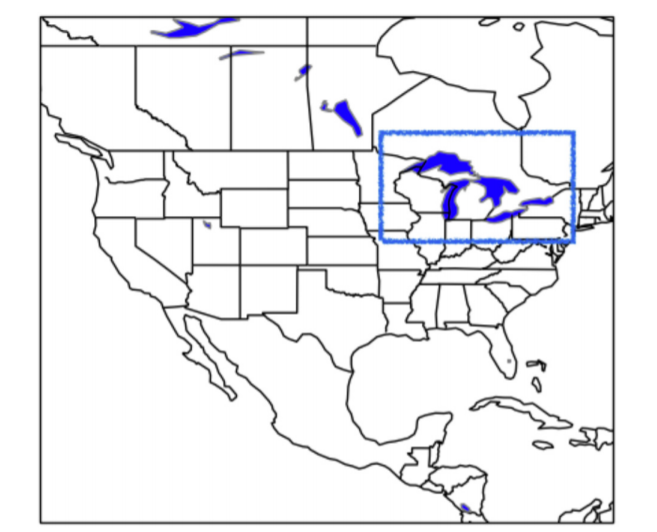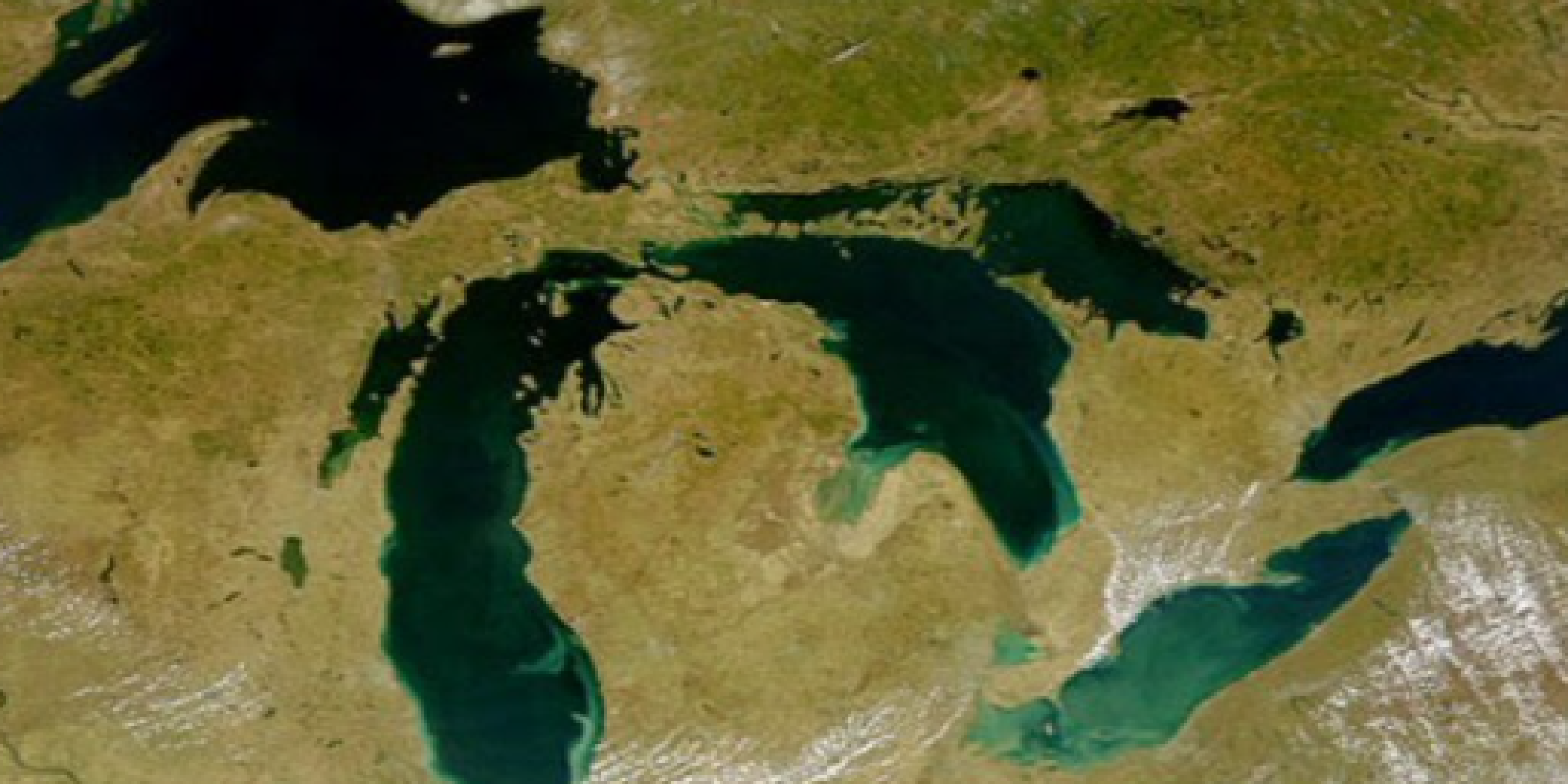Large lakes have a substantial effect on regional and local weather patterns. The presence of these lakes alter regional and local climates, producing significantly different weather and climate conditions than if the lakes were not present. These lake-atmosphere-land systems impact local energy (i.e., heat) and hydrologic cycles; as temperature differences between the lake surface and overlying air drive lake effects events such as lake breezes and enhanced lake-effect precipitation. These lake-atmosphere-land interactions directly impact water supply budgets, commerce, and ecosystems, thus proving to be an important aspect in climate models. However, in the climate models used to investigate future climate changes, lakes are greatly simplified and sometimes absent due to the inclusion of lakes adding complexity and cost. The combination of small global effects from large lakes and complexity costs often lower the priority of improved representation of lakes in global models.
In a new Journal of Great Lakes Research, authors Laura Briley, Richard Rood, and Michael Notaro analyzed a widely used set of CMIP5 global climate models and discussed the barriers they faced in uncovering the treatment of large lakes in the CMIP5 models. For this research,the Laurentian Great Lakes region was selected. In addition, the authors present the framework developed for identifying how individual large lakes are represented in CMIP5.


Map of Laurentian Great Lakes (blue) inside blue rectangle
From this research, it was found that the few CMIP5 models that represented large lakes do so at relatively coarse spatial resolutions that are less than ideal for many practitioners’ uses. A primary recommendation for users interested in high resolution future climate projections in large lake regions is to consider dynamically downscaled climate models. The authors demonstrate that better documentation of lakes in model metadata, especially metadata that is standardized across all modeling groups, would greatly reduce the amount of effort required to assess models in the future. The authors state, “We realize that the original intent of the CMIP simulations was not directed at regional application as we have pursued. However, the CMIP archive has emerged as the foundational dataset used in assessments and applications. There have been enormous efforts to define and improve the metadata of the CMIP models.” It is suggested that in addition to the dynamical downscaling recommended above, it is time for the development of a class of models specifically designed for the purpose of adaptation on decadal scales. Not only for their regional applications such as this research, but the demands of, for example, regional characterization of sea level rise will be growing rapidly. MAPP is also funding a new study looking at the new CMIP6 generation of models, many of which have included significantly better lake descriptions. Early results are promising.
This study was partially funded by the MAPP program.
Read the full paper here
———————————————————————————————–
About MAPP
The Modeling, Analysis, Predictions, and Projections (MAPP) Program is a competitive research program in NOAA Research’s Climate Program Office. MAPP’s mission is to enhance the Nation’s and NOAA’s capability to understand, predict, and project variability and long-term changes in Earth’s system and mitigate human and economic impacts. To achieve its mission, MAPP supports foundational research, transition of research to applications, and engagement across other parts of NOAA, among partner agencies, and with the external research community. MAPP plays a crucial role in enabling national preparedness for extreme events like drought and longer-term climate changes. For more information, please visit www.cpo.noaa.gov/MAPP.



